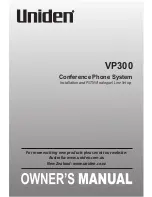
Safety
9
English
Safety
IMPORTANT
For the efficient and safe operation of
your wireless handheld portable
telephone, observe these guidelines.
Exposure To Radio Frequency Signals
Your wireless handheld portable telephone is a low power radio
transmitter and receiver. When it is ON, it receives and also sends
out radio frequency (RF) signals.
European and International agencies have set standards and
recommendations for the protection of public exposure to RF
electromagnetic energy.
•
International Commission on Non-Ionizing Radiation
Protection (ICNIRP) 1996
•
Verband Deutscher Elektringenieure (VDE) DIN-0848
•
Directives of the European Community, Directorate General V
in Matters of Radio Frequency Electromagnetic Energy
•
National Radiological Protection Board of the United
Kingdom, GS 11, 1988
•
American National Standards Institute (ANSI) IEEE.C95.1-1992
•
National Council on Radiation Protection and Measurements
(NCRP). Report 86
•
Department of Health and Welfare Canada. Safety Code 6
These standards are based on extensive scientific review. For
example, over 120 scientists, engineers and physicians from
universities, government health agencies and industry reviewed
the available body of research to develop the updated ANSI
Standard.
The design of your phone complies with these standards when
used normally.
Antenna Care
Use only the supplied or approved replacement antenna.
Unauthorised antennas, modifications or attachments could
damage the phone and may violate FCC regulations.
Phone Operation
Normal Position:
Hold the phone as you would any other
telephone with the antenna pointed up and over your shoulder.
Tips on Efficient Operation:
For your phone to operate most
efficiently:
•
Extend your antenna fully (if applicable).
•
Do not touch the antenna unnecessarily when the phone is in
use. Contact with the antenna affects call quality and may
cause the phone to operate at a higher power level than
otherwise needed.
m2c_en.bk : safety.fm5 Page 9 Tuesday, October 26, 1999 4:07 PM












































